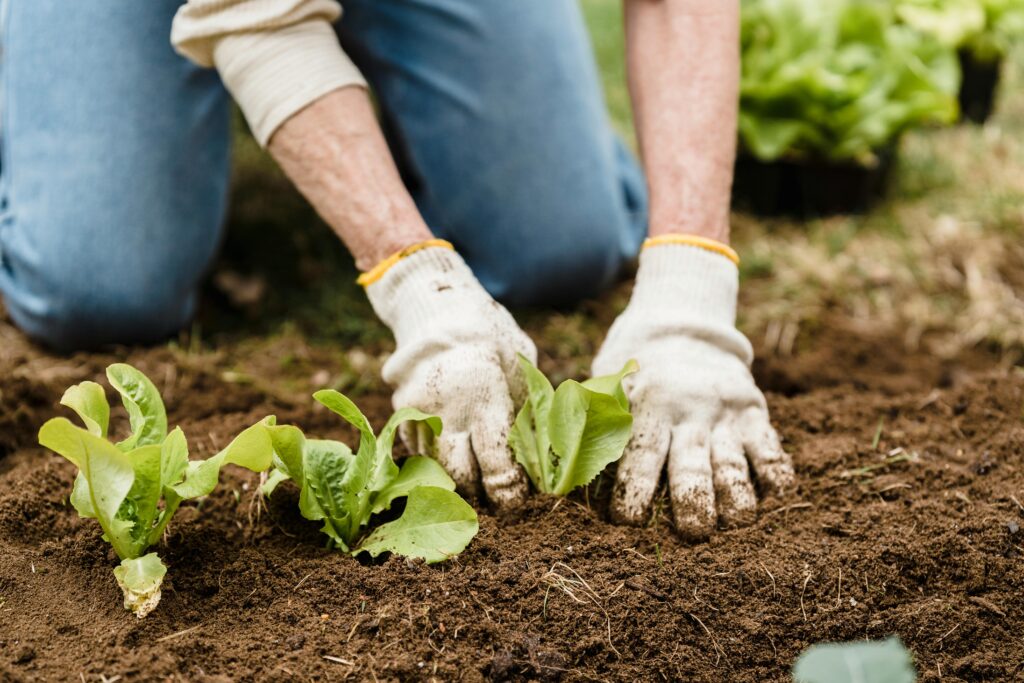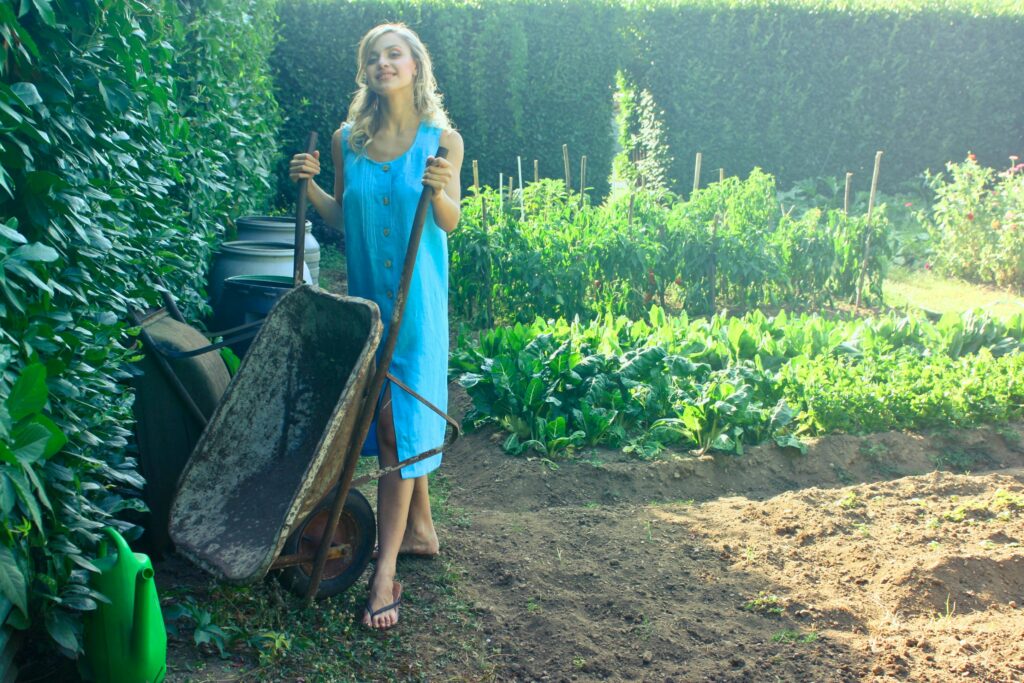Vegetables to Plant in Spring

I. Introduction: vegetables to plant in spring!
Welcome to the vibrant and rejuvenating season of spring! As the frost thaws and the days grow longer, it’s the perfect time to start planning your vegetable garden. Spring brings new beginnings, and what better way to embrace this than by planting a bounty of fresh vegetables?
a. Welcoming the Spring Season
Importance of Planning Your Spring Vegetable Gardena. Welcoming the Spring Season Spring ushers in a sense of renewal, marked by warmer weather and longer days. It’s an ideal time for gardeners to start anew, witnessing nature’s rebirth. This season brings a palette of vibrant greens and blooms, setting a perfect stage for planting and nurturing a garden.
b. Importance of Planning Your Spring Vegetable Garden
Planning your spring vegetable garden is crucial for maximizing yield and diversity. It involves selecting suitable crops based on climate and space, timing plantings to align with seasonal conditions, and preparing resources. Effective planning ensures a well-organized garden, leading to healthier plants and a more bountiful harvest.
II. Understanding Your Spring Garden!
Welcome to the vibrant and rejuvenating season of spring and find out which vegetables to plant in spring! As the frost thaws and the days grow longer, it’s the perfect time to start planning your vegetable garden. Spring brings new beginnings, and what better way to embrace this than by planting a bounty of fresh vegetables?
a. Assessing Sunlight and Shade
Sunlight is vital; most vegetables need about six hours of direct sun daily. Observe your garden’s sunlight patterns to identify areas with sufficient exposure. Shade-loving plants can be placed in less sunny spots.
b. Soil Quality and Preparation
Soil quality is equally crucial. Start by testing the soil for pH and nutrient content. Enhance the soil with organic matter to improve its texture and nutrient levels. Well-prepared soil ensures robust plant growth. These initial steps set the foundation for a thriving and productive spring garden.

III. Top Vegetables to Plant in Spring
a. Leafy Greens: Spinach, Kale, and Lettuce
Spinach, kale, and lettuce are ideal for early spring planting. They thrive in cooler temperatures and mature quickly, providing an early and continuous harvest. These greens are nutrient-rich and versatile, perfect for salads and cooking.
b. Root Vegetables: Carrots and Radishes
Carrots and radishes are excellent choices for spring gardens. They prefer cooler soil to start and can be harvested relatively quickly. Radishes are particularly fast-growing, offering a crisp, peppery addition to meals, while carrots develop sweetness as they mature.
c. Legumes: Peas and Beans
Peas and beans are perfect vegetables to plant in spring.. They grow well in cooler temperatures and enrich the soil with nitrogen, benefiting subsequent crops. Peas offer early harvests, while beans continue to produce as the season progresses.

d. Onions
Onions planted in spring lead to a full harvest by late summer. They require minimal space and maintenance, making them suitable for various garden sizes. Onions are a staple in many cuisines, adding flavor to a wide range of dishes.
e. Broccoli
Broccoli is a hardy choice for spring gardens, tolerating colder temperatures. It requires more space but yields substantial and nutritious heads. Planting in spring can lead to early summer harvests, providing a healthy, green addition to meals.
IV. Step-by-Step Guide to Planting
Planting in the right conditions and at the right time is crucial. Remember to give each plant enough space to grow.
a. Preparing the Soil
Preparing the soil is the first step towards a successful garden. Start by clearing the area of weeds and debris. Incorporate organic matter like compost or well-rotted manure to enhance soil structure and fertility. Ensure the soil is loose and well-draining to facilitate root growth.
b. Sowing Seeds: Depth and Spacing
When sowing seeds, depth and spacing are crucial. Plant seeds at a depth approximately three times their size. This ensures adequate soil contact and moisture retention for germination. Follow the spacing instructions on seed packets; proper spacing prevents overcrowding, which can lead to stunted growth and disease.
c. Watering and Fertilizing Tips
Watering and fertilizing are essential for plant health. Water deeply but infrequently to encourage strong root development. Avoid overhead watering to reduce the risk of leaf diseases. Use a balanced, organic fertilizer to provide essential nutrients. Over-fertilizing can be harmful, so apply as per the recommended rates. Regularly check soil moisture and adjust watering and fertilizing as needed, considering weather conditions and plant growth stages.

V. Pest Control and Maintenance
Mulching is an excellent practice for moisture retention and weed control. Organic mulches, like straw or wood chips, also contribute to soil health as they decompose. Remember, a well-maintained garden is more resilient to pests and diseases, leading to a more productive and enjoyable gardening experience.
a. Natural Pest Deterrents
Effective pest control and regular maintenance are crucial for a healthy garden. Natural pest deterrents are environmentally friendly and safe for both plants and humans. Introduce beneficial insects like ladybugs and lacewings, which prey on harmful pests. Planting aromatic herbs such as basil and lavender can also naturally deter pests. Utilize barriers like row covers to protect plants from insects and wildlife.
b. Regular Maintenance Tips
Regular maintenance is key to garden health. Consistently inspect plants for signs of pests or disease. Early detection often means simpler, more natural interventions can be effective. Keep the garden clean; remove fallen leaves and debris which can harbor pests. Pruning overgrown branches and dead leaves improves air circulation, reducing the risk of fungal infections.
VI. Maximizing Your Harvest
Maximizing your harvest involves strategic planning and timely actions. Succession planting is a key strategy. It involves planting new crops as others are harvested, ensuring a continuous supply of vegetables throughout the season. Start with fast-growing crops like lettuce and radishes, followed by longer-growing ones like carrots and tomatoes. This staggered approach maximizes the use of garden space and extends the harvesting period.
a. Succession Planting Strategies
Maximizing your harvest involves strategic planning and timely actions. Succession planting is a key strategy. It involves planting new crops as others are harvested, ensuring a continuous supply of vegetables throughout the season. Start with fast-growing crops like lettuce and radishes, followed by longer-growing ones like carrots and tomatoes. This staggered approach maximizes the use of garden space and extends the harvesting period.
b. Harvesting Tips for Optimal Yield
For optimal yield, harvesting at the right time is crucial. Most vegetables are best harvested when they’re young and tender. For leafy greens, pick outer leaves regularly to encourage new growth. Root vegetables like carrots and radishes should be harvested before they become too large and woody. Regular harvesting often stimulates further production, especially in beans and peas.
It’s also important to harvest in the morning when vegetables are hydrated and cool. This ensures they retain their freshness and flavor. By following these harvesting tips and employing succession planting, you can greatly enhance the productivity and enjoyment of your garden.

VII. Troubleshooting Common Issues
Troubleshooting common issues in the garden, especially regarding pests, diseases, and weather-related challenges, requires vigilance and adaptability. Dealing with pests and diseases starts with prevention. Choose disease-resistant plant varieties and rotate crops annually to prevent soil-borne diseases.
a. Dealing with Pests and Diseases
If pests or diseases appear, identify them accurately and use targeted treatments such as organic insecticides or fungicides. Natural methods, like introducing beneficial insects or applying neem oil, can be effective and environmentally friendly.
b. Weather-Related Challenges
Weather-related challenges are often unpredictable, but you can mitigate risks. For frost, use covers to protect young plants. In the case of excessive rain, ensure good drainage to prevent root rot. During droughts, use mulch to retain soil moisture and water plants deeply but less frequently to encourage deep root growth.
Monitoring your garden regularly helps you to respond quickly to issues. Keep a garden journal to track what works and what doesn’t, as this can be a valuable resource for future gardening seasons. With proactive and informed approaches, you can overcome most gardening challenges, leading to a healthy and productive garden.
Viii. Engaging with the Gardening Community
Engaging with the gardening community offers invaluable opportunities for both sharing experiences and learning from others. Joining local gardening clubs or online forums allows you to connect with fellow enthusiasts.
a. Sharing Experiences and Learning from Others
Sharing successes, challenges, and tips with others can provide new insights and techniques to enhance your own gardening practices. It’s also a great way to learn about local pests and diseases, and how to combat them effectively.
b. Local Gardening Resources
Utilizing local gardening resources is another benefit of community engagement. Many areas have extension services, botanical gardens, or community gardens that offer workshops, plant swaps, and expert advice. These resources often provide localized information which is crucial for successful gardening, such as specific soil conditions, climate challenges, and native plant recommendations. Engaging with local resources also helps in building a support network, which can be particularly helpful for novice gardeners. Overall, active participation in the gardening community enriches your experience and contributes to a more vibrant and knowledgeable gardening culture.

IX. Conclusion
a. Reflecting on the Joy of Spring Gardening
As we conclude, this article on ‘vegetables to plant in spring’ and reflecting on the joy of spring gardening brings a sense of accomplishment and anticipation. The process, from preparing the soil to planting seeds and nurturing them into flourishing plants, is incredibly rewarding. Spring gardening is not just about the physical harvest but also about the growth and learning we experience as gardeners.
b. Anticipating the Harvest
The anticipation of harvesting fresh, home-grown vegetables brings excitement and satisfaction. It’s a reminder of the wonders of nature and the fruitfulness of our efforts. This journey, filled with challenges and triumphs, encapsulates the essence of spring gardening – a perfect blend of patience, care, and the eager anticipation of a bountiful harvest.
FAQs
1. What is the best vegetable to plant in spring for beginners?
Leafy greens like lettuce are ideal for beginners due to their ease of growth and quick harvest time.
2. How often should I water my spring vegetables?
It depends on your climate, but generally, a deep watering once or twice a week is sufficient.
3. Can I plant summer vegetables in spring?
It’s best to wait until the risk of frost has passed before planting summer vegetables.
4. How do I protect my vegetables from pests?
Use natural pest control methods like companion planting and beneficial insects.
5. When is the best time to start a spring garden?
Start after the last frost date in your area to ensure the best growing conditions.

